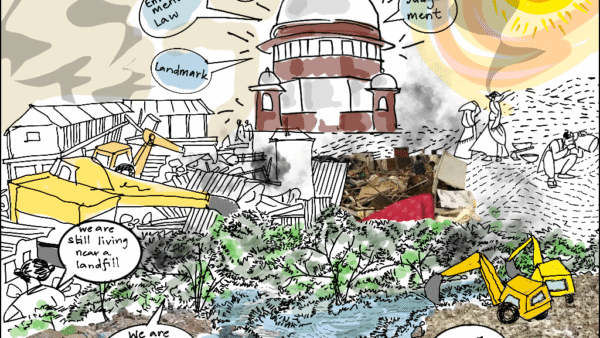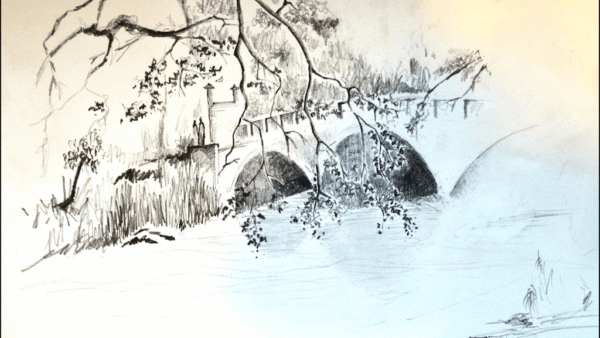A lake,
landmark to
locate easily
my nest like
home, a centre
to ever-widening
concentric city,
lies without life,
no fishes, no ducks,
no mosquitoes,
not even microbes
exist within.
These words appeared in the poem Death of a Lake by Thriveni Mysore, a science teacher[1] capturing the decrepit state of hundreds of lakes in Bengaluru. In another verse of the poem, published in 2017, she elucidates how her ears “hurt-ache-burn” to hear people’s exclamations of “the fire and froth” in the lake “as if it is all the lake’s doing”. The verses eloquently point to the serious and documented decline in Bengaluru’s lakes; none of it was natural.
The lakes-in-decline story has had a sequel in the last few years. Bengaluru’s lakes are being restored and rejuvenated, one by one, with a somewhat chaotic mix of individual initiatives, citizens’ groups, corporate contributions, and officials. As many as 69 of the nearly 300 lakes were reportedly restored between 2019 and 2022.[2] Of the lakes, 167 are governed by the Bruhat Bengaluru Mahanagara Palike (BBMP).[3] This July, Karnataka’s Deputy Chief Minister DK Shivakumar announced that the BBMP would revive 24 lakes, at Rs 50 crore, to recover Bengaluru’s long-lost identity as the ‘City of Lakes’.[4] The list included Kalkere Lake, Kacharakanahalli Lake, Siddapura Lake, and Doddabidarakallu Lake among others.
The restoration work, so far, has meant desilting, sewerage diversion, improvements to inlets and culverts, fencing, creating walking pathways and public access. This template has more or less informed all restoration work so far, including by the ‘Lake Man’ Anand Malligavad[5] and several volunteer or citizens’ groups like Friends of Lakes whose revival work of the suburban Jakkur Lake received an award in 2019.[6] This April, WELL Labs, in collaboration with Friends of Lakes and the Bengaluru Climate Action Cell, developed a framework for the management of lakes[7]. There are numerous instances of citizen groups collaborating with the civic body to restore and manage lakes in their neighbourhoods.
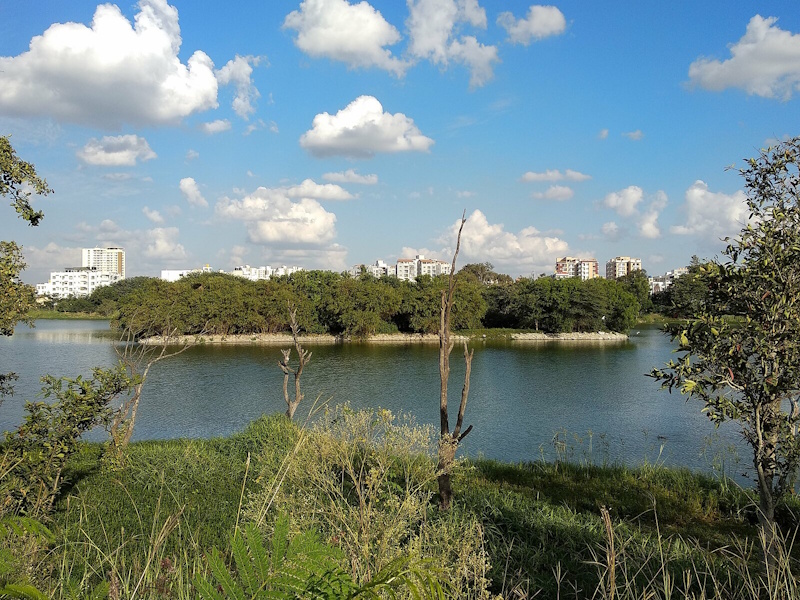
Photo: Wikimedia Commons
All this has instilled hope that Bengaluru, the city that rapidly expanded its built area at the expense of its ecology[8] – especially its unique network of lakes – may finally be on the path of renewing and reclaiming it. It may be premature. While the restoration work so far carries satisfaction and excitement, the task is a long way away from completion. The entire intricate natural network of lakes and other water bodies has to be revived for Bengaluru to regain its ecological commons.
This depends on three issues that need to be addressed, all three lie beyond the scope of individual lake restoration, whether by people or the BBMP. First, the still-expanding footprint of new constructions that continue to encroach on lakes; second, Bengaluru’s unbuilt or disconnected sewerage system which leads to untreated sewage randomly junked into water bodies; and, third, the management of restored lakes with local people and traditional knowledge of sustainable water bodies. Of these, the demand for land for new constructions poses the highest threat. Without addressing these in tandem, lake rejuvenation efforts are unlikely to be sustainable or make a huge difference.
The backstory and the recent crisis
Bengaluru’s lakes losing to real estate is the leitmotif. Acclaimed author and Director, School of Climate Change and Sustainability at Azim Premji University, Dr Harini Nagendra[9] documented this in her book Nature in the city. Miller’s Lake, Subhashnagar Lake, Kodihalli Lake, Sinivagilu Lake were converted to residential layouts; Akkithimmanahalli Lake turned into a hockey stadium; Shoolay Lake, a football ground and a mall; and the Challaghatta lake bed, a golf club. Dr Nagendra dwelt on how sewerage and industrial effluents found their way into storm water drains and, from there, into the lakes. The Kanteerava Stadium sits on the erstwhile Sampangi Lake which once supported agriculture and water supply. The lake, she found, used to be larger than the area occupied by the stadium now. “Only a small rectangular tank is a reminder of the original identity,” she notes.
Bengaluru’s network of cascading lakes gave it water – and character. Situated at an elevation of 920 metres above sea level and without a river’s abundance, it relied on lakes. The network of lakes divided the city roughly into three triangular valleys – the Vrishabhavati valley which connects to Arkavati River in the east, the Koramangala-Challaghatta valley in the west, and the Hebbal valley in the north. Dating back to the 16th century, the rainfed lakes or tanks, as some were called, were maneuvered around the natural gradient so that overflows filled the ones downstream.[10] Between the lakes network and community-managed open wells, there was enough water for farming and fishing. The lakes were also ecological commons and places of culture.
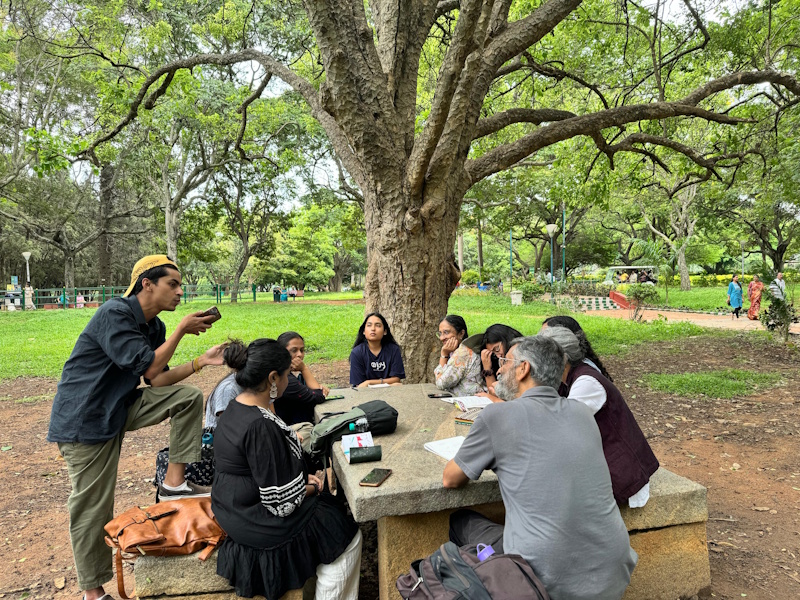
Photo: Priyanka Salunkhe
Legend goes that there were once a thousand lakes across the city but more empirical counts peg at around 300. The lakes provided Bengaluru with nearly half its water supply, became sponges that soaked rainwater, helped prevent floods, and recharged the ground water.[11] Gradually, as the city expanded during the IT boom 20-25 years ago, lakebeds that were often dry were simply re-zoned as developable land for construction; this broken network meant flooding in scattered areas, loss of biodiversity, and reduction or disappearance of migratory birds.
A study of land cover and wetland changes from 1965 to 2018 found that “built-up areas in the Bengaluru Urban district increased ten-fold with the highest growth rate from 2014 to 2018” while “water bodies and flooded areas shrunk from 64 square kilometres in 1965 to 55 square kilometres in 2018”.[12] The wetlands were mostly lost to construction and the changes “were likely accompanied by ecological regime changes, triggering deteriorations in ecosystem services,” it added. Most lakes turned polluted or simply disappeared.
“The lakes lost their relevance as water sources after the supply moved from Hesarghatta Lake and Tippagondanahalli Reservoir to the Cauvery system,” explains S Vishwanath, water conservation expert.[13] The city’s groundwater reserves too eventually began to run out. A study found that 80 wards were at risk of severe water scarcity.[14] The water crisis in the summer of 2024 made international headlines. A recent data jam found encroachments on lake beds and storm water drains, concretisation of lake surroundings, and broken or decrepit network of drains connecting the lakes.[15]
Puttenahalli Lake was but one example.[16] The cost of encroached land in the Yelahanka cascade which includes Yelahanka, Attur and Puttenahalli lakes was over Rs 6,000 crore.[17] Similarly, the Thallaghattapura lake system was grappling with sewage problems, reduction in catchment area, and poorly maintained inlet and outlet drains despite, surprisingly, rejuvenation by the BBMP in 2022. Here, open defecation was also an issue.
The Srigandakaval, Herohalli and Marathalli lakes dried up in summer making them prone to encroachment of all kinds – apartment complexes, bungalows, play areas, and walking paths. Some lakes like parts of Saul Kere were marked as private property. The BBMP, the group found, had spent Rs 13 lakh to maintain Chikkabellandur, Carmelaram and Gunjur Palya lakes but, importantly, noted that rejuvenation ‘ends up making soup bowls out of thriving wetlands.’
Bringing them back to life
The many well-meaning but uncoordinated rejuvenation efforts meant each restorer focused on one or two lakes – less than ideal but better than none at all. The early individual experiments turned into templates followed by others. Among the first was Malligavad’s tryst with the 36-acre Kyalasanahalli Lake in 2016. It was being used as a dumping ground and cricket field. With corporate social responsibility funds from his employer, local volunteers, earth movers and trucks, the team removed an estimated 4,00,000 cubic meters of mud, planted 18,000 saplings of indigenous species, created islands for bird nesting, and ensured a separate area with mud embankments for natural treatment of sewage. That year’s monsoon revived the lake.[18]
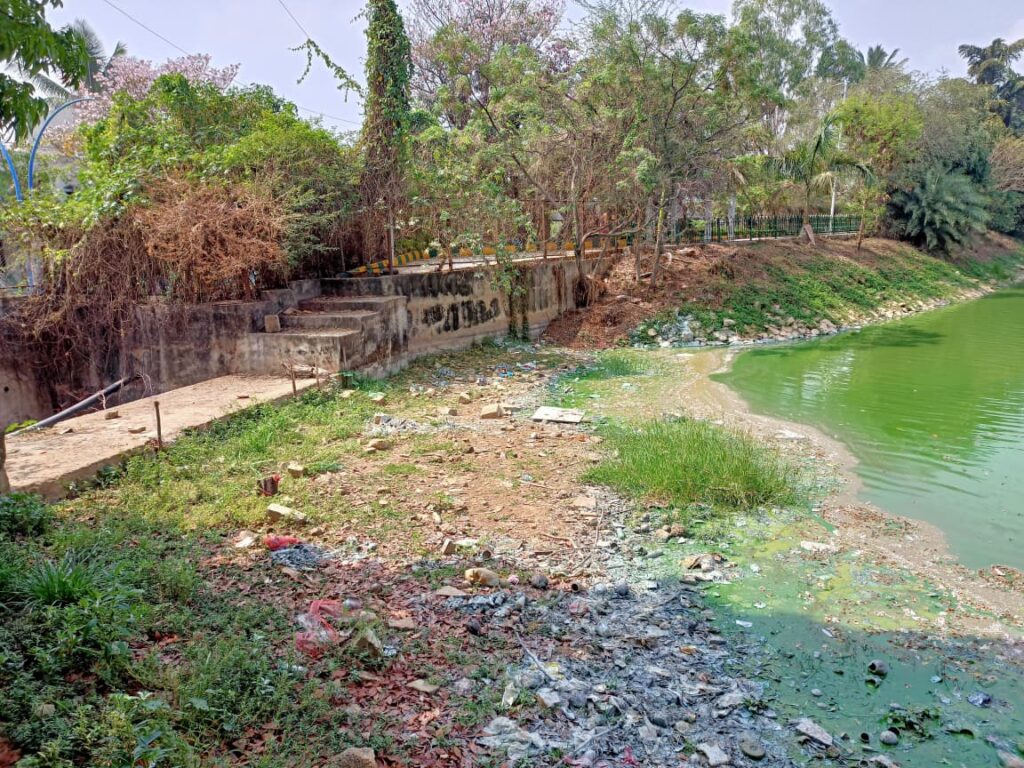
Photo: WELL labs
Desilting the lakebeds and clearing the algae and weeds, growing due to sewage water, are key to restoration. Whether Nagarkerre Lake or Doddajala Lake on Bengaluru’s outskirts, the weeds “floating like a green carpet” are cleared by fishermen and local volunteers with the help of tractors and earthmovers.[19] But the untreated sewage is the culprit; it polluted 85 percent of Bengaluru’s waterbodies, found a study by the Bengaluru-based Environmental Management & Policy Research Institute (EMPRI).[20] This calls for structural and sustainable infrastructure work across the city, beyond that of individual lake restorations.
Even in the restoration work, the government should have led from the front; instead, volunteer and citizens’ groups across neighbourhoods have done the heavy lifting. “Wherever a lake has been saved, it will be because a citizen group fought for it,” V. Ramprasad, co-founder of Friends of Lakes which helped rejuvenate more than 20 water bodies, told the Associated Press.[21]
While commendable, individual efforts have sometimes meant non-recognition of locals, called neeruganti, whose indigenous knowledge was historically responsible for the maintenance of lakes and rajakaluves.[22] At the other end is corporate philanthropy. The JSW Foundation, for example, rejuvenated Margondanahalli Lake in Electronic City in collaboration with the Malligavad Foundation.[23]
Puttenahalli and Kaikondrahalli lakes in south Bengaluru, surrounded by posh apartment complexes, are now lush and green spaces accessible to everyone. The residents and local communities maintain them along with the municipal administration. Mod Foundation is working to restore the city’s storm water drains and rajakaluves, approaching drains as ‘public space’ and not ‘grey infrastructure’.[24]
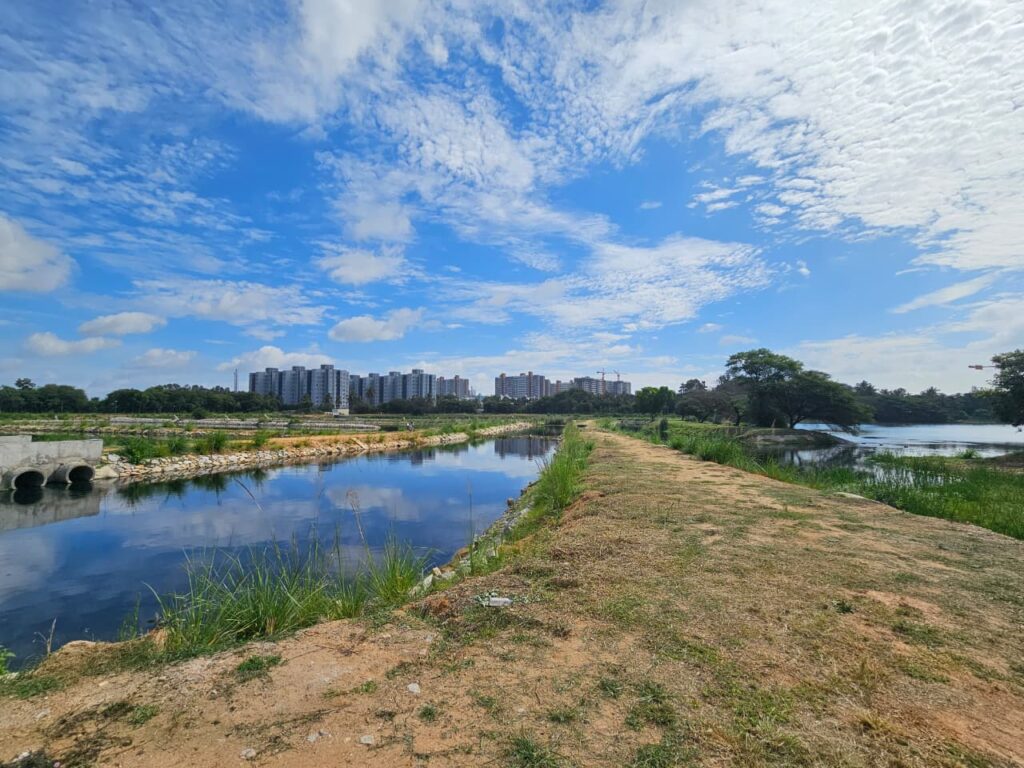
Photo: Vijay Kumar
Concerns ahead
The list of lakes earmarked for rejuvenation is growing.[25] but the role and commitment of the authorities are primary concerns. The collaborations have not always been smooth. The Puttenahalli Neighbourhood Lake Improvement Trust (PNLIT), formed in 2010, became the lake’s custodian and collaborated with the BBMP till July this year.[26] However, citing a High Court order, the BBMP refused to renew its MoU with the Trust – and other lake groups – but the Trust continues to maintain the lake with local donations.[27]
The BBMP’s refusal to support citizens’ efforts while announcing its own restoration plans appear contradictory. Importantly, its approval of land re-zoning to allow more constructions on what used to be lakes or surrounding areas has to be revisited if the restoration has to be meaningful. “Based on each lake, its size and location, the city will need to plan to maximise the socio-ecological potential of its lakes,” says S Vishwanath adding that while Bengaluru’s topography interconnects the lakes, the primary purpose was not flood control. However, they can be used as flood buffers, to alleviate the urban heat island effect, and recharge groundwater.
How people around a lake experience or use it should inform the framework of restoration, says Anam Husain, Programme Associate, Urban Water Programme at WELL Labs. “This helps the government and the people involved in the restoration” and employs the community’s familiarity to monitor, evaluate and alert authorities. The guidelines document could help strengthen the restoration and maintenance process. “Bengaluru has an active citizen participation, the government should empower local communities to take care of natural resources,” she adds.
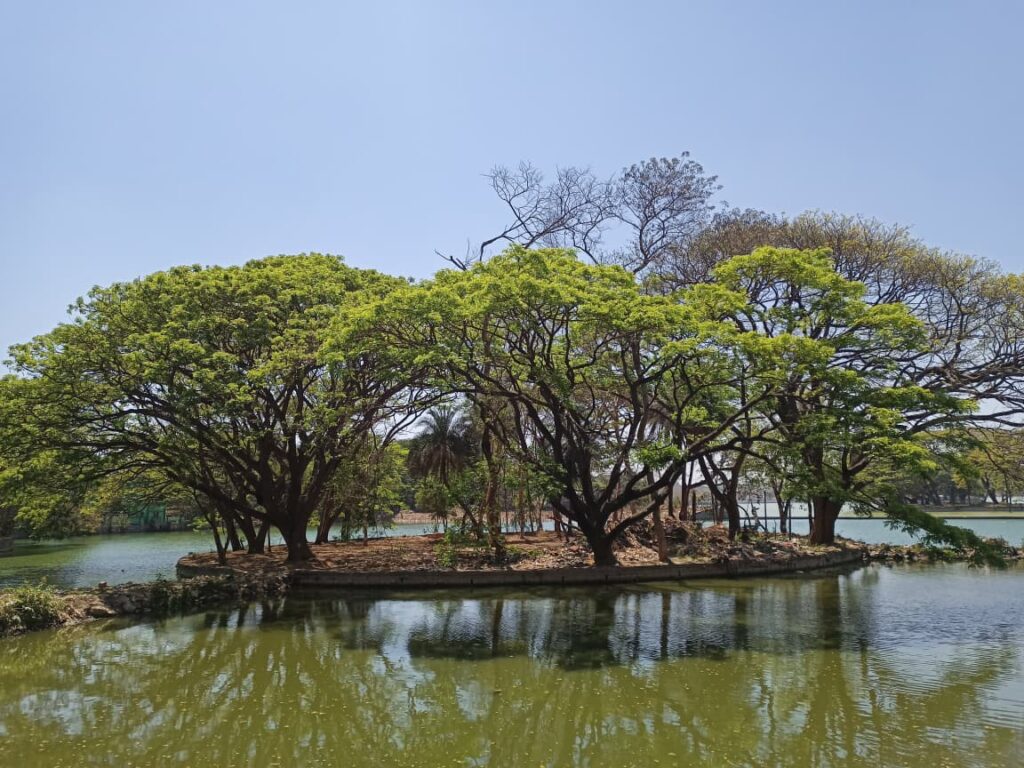
Photo: WELL labs
As different stakeholders in Bengaluru’s lakes restoration learn lessons and move forward, it is important that rejuvenation is inclusive – the neerugantis, local marginalised communities, domestic and gig workers must have access to the lakes rather than only the better-off residents whose apartments encircle them. As Vishwanath points out: “We romanticise spaces and allow that to dominate the narrative…but access is a constant negotiation between society and the state.” Lakes are, after all, Bengaluru’s ecological commons.
Jashvitha Dhagey, a multimedia journalist and researcher, is the recipient of the Laadli Media Awards consecutively in 2023 and 2024 for her work in Question of Cities. She holds a post-graduate diploma in Social Communications Media from Sophia Polytechnic and is presently pursuing her Masters in Urban Studies at the Indian Institute for Human Settlements, Bengaluru. She observes and chronicles multiple interactions between people, between people and power, and society and media, and developed a deep interest in the way cities function, watching Mumbai at work.
Cover photo: Sankey Tank, Bengaluru; Credit: Shreyas Mohan


